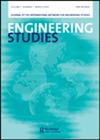Constructing Containment: Thompson-Starrett, the Çeşme Beach Houses, and the Geopolitics of American Engineering in Cold War Turkey
IF 1.3
3区 工程技术
Q2 EDUCATION, SCIENTIFIC DISCIPLINES
引用次数: 3
Abstract
For the first half of the twentieth century, Thompson-Starrett and Co., a New York-based American engineering, construction, and contracting firm, dominated the building scene. In operation between 1899 and 1968, it was a leader in skyscraper construction and large-scale projects, and literally built the New York skyline. It designed and constructed the tallest skyscraper of the era, the Woolworth Building, as well as other iconic Manhattan structures such as the Equitable Building, the American Stock Exchange, the New York Municipal Building, and the Claridge, Algonquin, Roosevelt, St. Regis, and Waldorf-Astoria Hotels. A formidable pioneering force in structural engineering a hundred years ago, Thompson-Starrett is, by and large, forgotten today, especially its post-World War II ventures in Turkey, such as the Sarıyar Dam and the Çeşme Beach Houses, a luxury beachfront cooperative located in Ilıca, Izmir. However, what would prompt the engineering firm responsible for the Woolworth Building to take on the road and utility construction and project management of a Turkish summer resort? The answer lies in Cold War geopolitics and booming private enterprise, both of which, in the 1950s, converged in Turkey, relied on American engineering, and involved a complex process of Americanization.构建遏制:Thompson Starrett、Çeşme海滩别墅和冷战时期土耳其美国工程的地缘政治
20世纪上半叶,总部位于纽约的美国工程、建筑和承包公司Thompson Starrett and Co.主导了建筑业。在1899年至1968年的运营中,它是摩天大楼建设和大型项目的领导者,并真正建造了纽约的天际线。它设计并建造了那个时代最高的摩天大楼伍尔沃斯大厦,以及其他标志性的曼哈顿建筑,如Equitable大厦、美国证券交易所、纽约市政大厦,以及Claridge、Algonquin、Roosevelt、St.Regis和Waldorf Astoria酒店。Thompson Starrett是一百年前结构工程领域的一支强大的先锋力量,今天基本上被遗忘了,尤其是它在二战后在土耳其的合资企业,如Sarıyar大坝和Çeşme Beach Houses,这是一家位于伊兹密尔Ilıca的豪华海滨合作社。然而,是什么促使负责伍尔沃斯大厦的工程公司承担土耳其避暑胜地的道路和公用事业建设以及项目管理?答案在于冷战时期的地缘政治和蓬勃发展的私营企业,这两者在20世纪50年代都融合在土耳其,依赖美国工程,并涉及复杂的美国化过程。
本文章由计算机程序翻译,如有差异,请以英文原文为准。
求助全文
约1分钟内获得全文
求助全文
来源期刊

Engineering Studies
ENGINEERING, MULTIDISCIPLINARY-HISTORY & PHILOSOPHY OF SCIENCE
CiteScore
3.60
自引率
17.60%
发文量
12
审稿时长
>12 weeks
期刊介绍:
Engineering Studies is an interdisciplinary, international journal devoted to the scholarly study of engineers and engineering. Its mission is threefold:
1. to advance critical analysis in historical, social, cultural, political, philosophical, rhetorical, and organizational studies of engineers and engineering;
2. to help build and serve diverse communities of researchers interested in engineering studies;
3. to link scholarly work in engineering studies with broader discussions and debates about engineering education, research, practice, policy, and representation.
The editors of Engineering Studies are interested in papers that consider the following questions:
• How does this paper enhance critical understanding of engineers or engineering?
• What are the relationships among the technical and nontechnical dimensions of engineering practices, and how do these relationships change over time and from place to place?
 求助内容:
求助内容: 应助结果提醒方式:
应助结果提醒方式:


